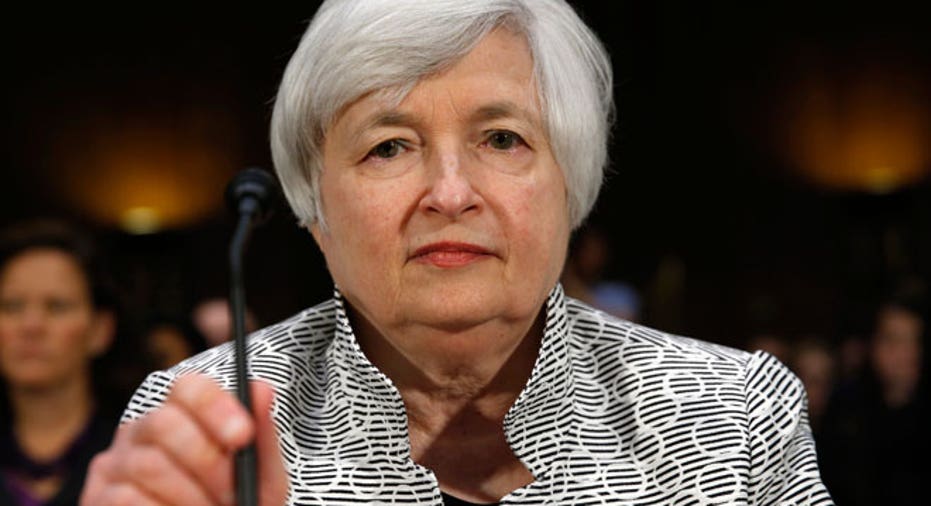Focus Shifting to HOW Rates Will Move Higher

The question hovering over securities markets for months now has been when will the Federal Reserve raise interest rates from the historic low range set during the height of the 2008 financial crisis. But just as important is how those rates will be raised.
Most economists and analysts have been focusing on the internal debate within the Fed – specifically among members of the policy-setting Federal Open Markets Committee – over the timing and trajectory of rate hikes.
The timing has basically been established as mid-2015, although that liftoff date may be moving forward as economic data continues to improve.
Fed Chair Janet Yellen, up until recently a strong advocate for keeping interest rates low for the foreseeable future, has conceded that an array of economic indicators suggest the economy may nearly be strong enough to absorb higher borrowing costs.
“Following the discussions and presentations in Jackson Hole last week, it now looks like more Fed officials are leaning toward signaling that an increase in interest rates is coming, instead of signaling that interest rates are likely to remain low,” said Gary Thayer, chief macro strategist at Wells Fargo Advisors.
“But that does not mean that a rate increase is imminent. Rather, the question becomes how and when the Fed should do this without hurting the economy,” Thayer added.
One method Thayer suggests the Fed might use to better prepare markets for the eventuality of higher rates it to eliminate language that has been included in each of the Fed’s recent statements following its monthly meetings. The statements have all said the Fed intends to keep rates low for “a considerable period” after it winds down its bond purchasing program known as quantitative easing, which is scheduled to be phased out for good in October.
That phrase – “a considerable period” – has calmed investors and other market participants who want rates to stay low because they fear higher borrowing costs could cut into corporate profits and put a crimp in the ongoing stock market rally.
Sending a Clear Message
By eliminating the phrase from its next statement in September, the Fed would be sending a clear message to markets that they are considering raising rates sooner rather than later.
Some market watchers – and politicians – have raised concerns that the huge buildup of assets by the Fed through five years of monthly purchases of Treasuries and mortgage-backed securities will eventually lead to runaway inflation. What’s more, these inflation hawks fear that the Fed may not be able to avoid inflation because the central bank has no experience unwinding the stimulus policies of the kind that were unleashed over the last five years.
Standard & Poor’s Chief Global Economist Paul Sheard attempted to ease those fears in a report earlier this month: “As the U.S. Federal Reserve continues its stated process of reducing the amount of its monthly bond purchases, the warnings about impending disaster are growing ever louder. They create the impression among the wider public, and particularly among investors, that central banks have blithely paddled into treacherous waters from which they have no realistic hope of escape,” he wrote.
That’s not the case, Sheard said, adding, “Notwithstanding some degree of market volatility likely being unavoidable, the unwinding of QE (and zero interest rate policy) is a simple process conceptually and in principle operationally one that central banks should be able to manage reasonably smoothly. The central bank has considerable flexibility when it comes to calibrating the speed and nature of its exit.”
Policy Makers Generally Agree on Unwinding Stategy
Still, the timing debate is far from over.
Fed ‘doves’ led by Yellen and new Vice Chair Stanley Fischer have pointed to stubborn slack in U.S. labor markets as evidence that the economy isn’t ready for higher rates. Meanwhile, Fed ‘hawks’ such as Kansas City Fed President Esther George and Philadelphia Fed President Charles Plosser have made strong public arguments in favor of raising rates sooner – possibly in the first quarter of 2015 -- as a deterrent to asset bubbles and runaway inflation.
Interestingly, central bank policy makers appear to generally agree on the technical strategies for actually raising interest rates and unwinding the Fed’s bloated balance sheet.
The approach, outlined in the minutes the Fed’s two most recent meetings as well as in officials’ public statements since then, keeps the focus on the federal funds rate, the rate banks charge each other for overnight loans, as the barometer for rates that will affect everything from mortgages to car loans.
Fed officials have said in various interviews that central bank policy makers would likely reach a final agreement on their exit strategy at their next meeting in September.
Under the still-developing plan, the Fed would continue to set a target range for its benchmark federal funds rate. The rate was set at a range of 0%-0.25% in December 2008, and that 25 percentage point range would remain as the overall rate moves higher. The interest rate the Fed pays banks on reserves would form the top of the range, and the rate it pays to borrow cash from money funds and others would serve as the bottom.
Richmond Fed President Jeffrey Lacker told Bloomberg News earlier this month that he and his colleagues have made “excellent progress” toward developing an exit strategy for the Fed’s unprecedented stimulus policies initiated to spur economic growth in the wake of the financial crisis.
“Our announced target range for the fed funds rate is going to be our main communications device,” Lacker said. “The interest rate on excess reserves is going to play a key role in anchoring interest rates, including the fed funds rate,” while the rate paid to money funds would be “a kind of insurance policy, but not the main driver of our control of short-term interest rates,” he explained.